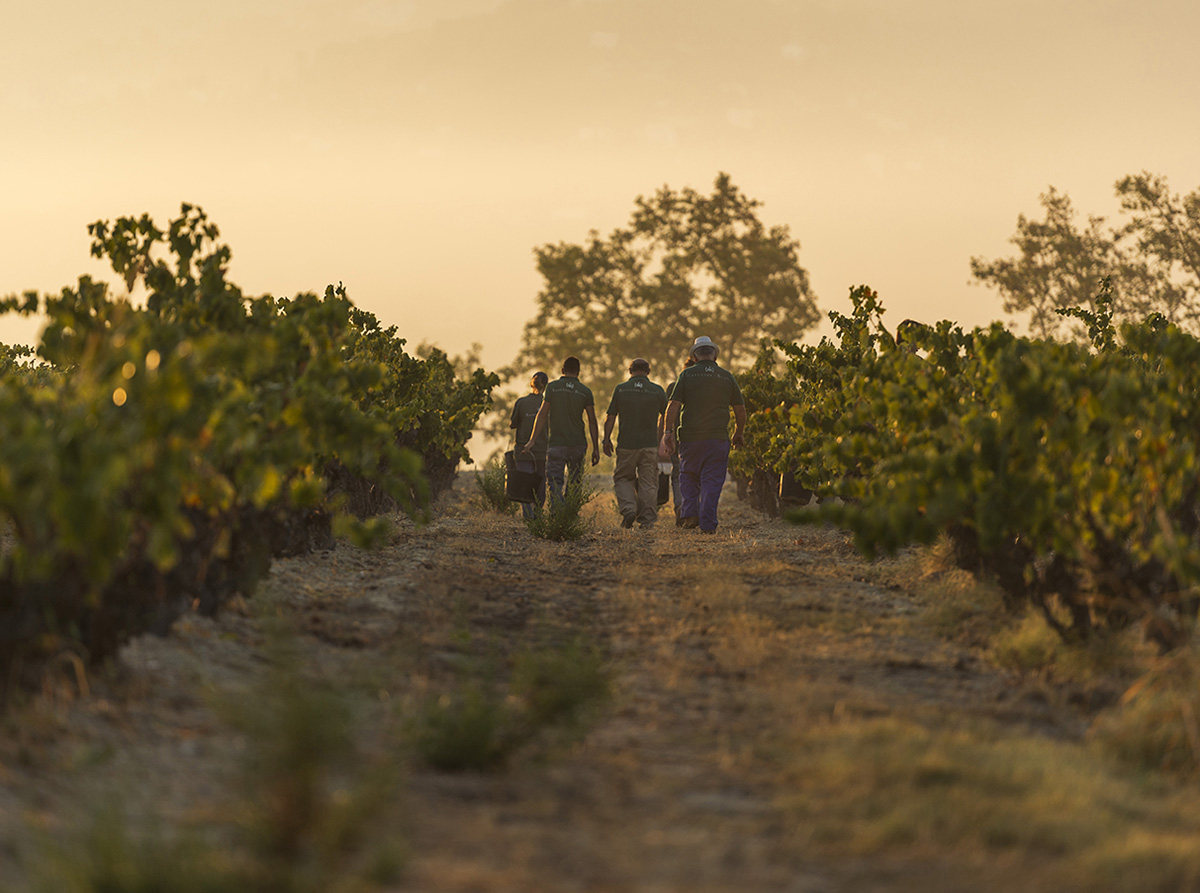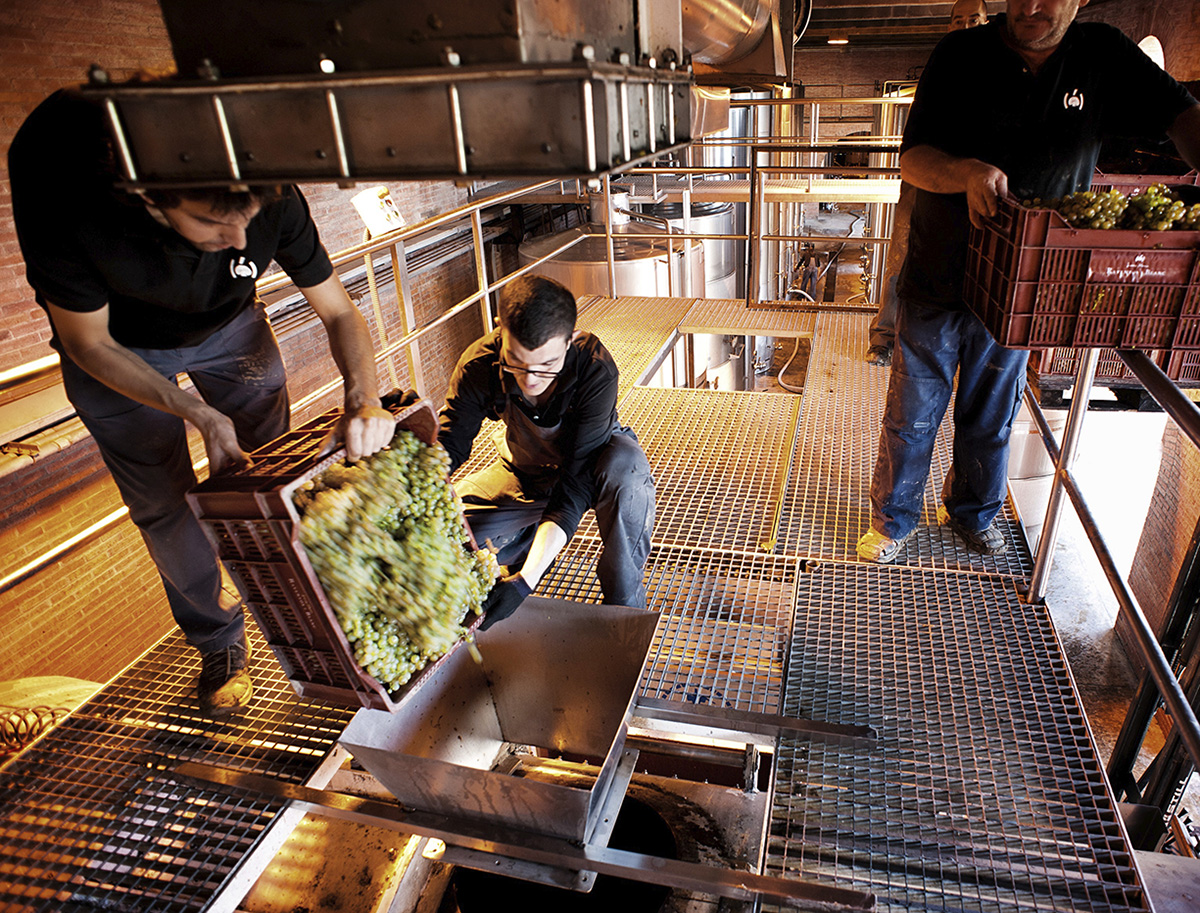Find out more about Raventós i Blanc!
We explain the anecdotes and news that happen in every corner of our farm.
From the winery to the farm
If you want to live our day to day on the farm
Follow us on @raventosiblanc

During the ripening process, we taste the grapes and carry out tests to determine the best time to start the harvest, which lasts from August to September.
The harvest on the estate is done manually, with the grapes being selected on the vine. The grapes are always harvested using buckets and transported in small trailers. The proximity of the winery means the grapes can be taken there straight away quickly and safely. Thus, they arrive at the winery undamaged, which prevents the must from oxidising.
A low-pressure press is used and the first high-quality must is used to make our wines. We always work in an inert atmosphere in order to preserve the maximum expression of the fruit.

We use static racking to clean the must; this is the most respectful cleaning process. Next, we carry out the alcoholic fermentation at a controlled temperature of between 17 and 20ºC in stainless steel vats. The grapes on the different plots are made into wine separately.
Once the alcoholic fermentation has finished, we allow the wines to rest on the lees and we carry out bâttonage (lees stirring) in the vats.

The hundred-year-old experience on our estate, its soils, its mesoclimates and the use of traditional varieties, means that even before the grape harvest we know which wine will be produced by the grapes on each plot.
Once the fermentation has ended, we taste the wines in order to find out the potential and the expression of the vintage, always linked to our terroir.
At Raventós i Blanc, we only have native varieties; varieties that with the passing of time and the generations have adapted perfectly to our terroir and our climate.
In 2011, we started to uproot the foreign varieties and, at present, we only cultivate the following varieties: Xarel·lo, Macabeu, Parellada, Monestrell, Bastard negre, Sumoll and Xarel·lo vermell.

The tirage and second fermentation are carried out following the traditional method.
With wines aged for at least 18 months on the lees, we manage to round out the wines so that they express 100% of the saline and mineral characteristics of our terroir and lose the unbalances of youth. During this ageing process, the bubbles are refined and integrated into the wine, becoming smaller and more pleasant. The yeast autolysis also occurs, producing different molecules that give sparkling wines creaminess and volume.

Finally, we carry out the remuage (riddling) manually in pupitres (A-frame-shaped riddling rack), shaking and twisting the bottles for 20 days. Next, we carry out the disgorging and add the expedition liqueur to the sparkling wine.
For the sparkling wines that are aged for 18 months we can add up to 5g/L of sugar but our longer aged wines are zero-dosage.